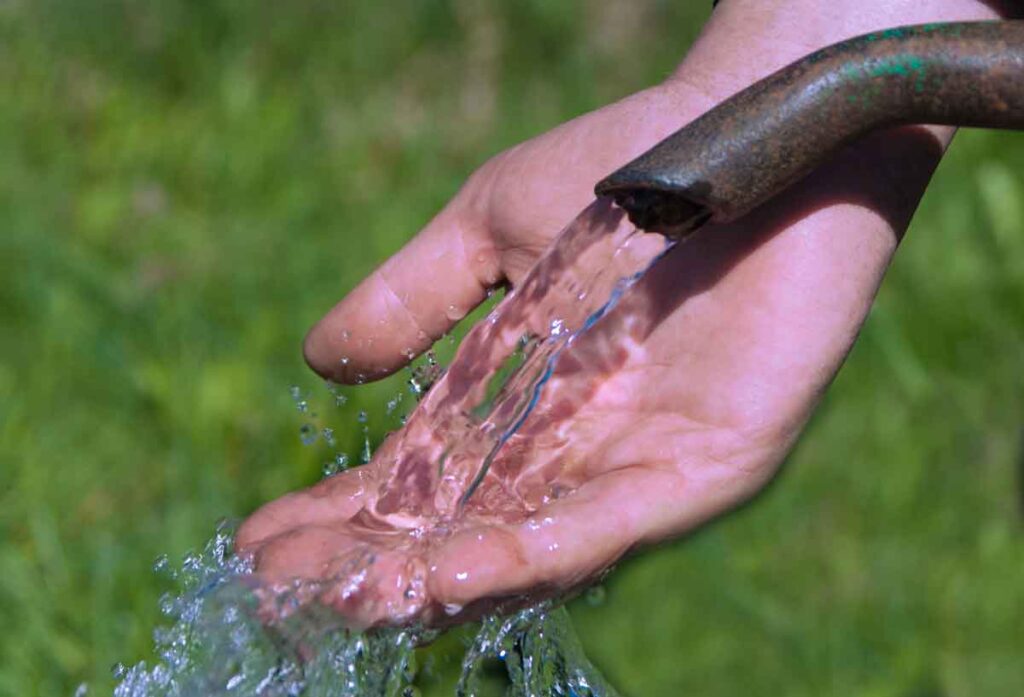Water for high-pressure pump equipment is usually drawn from a low volume domestic tap (residential) or sourced from a water supply on site (industrial). Regardless of the pump equipment you’re using or the water flow required, your water source plays an important role in maintaining performance, reducing risk and increasing your pump’s longevity.

Maintaining Performance
Pump equipment relies on an efficient water source in order to deliver optimal performance. If the water flow is insufficient or if there’s contaminants or debri in the water stream – the performance of the pump equipment will be impaired. This will greatly affect your work output and could cause risks (which we discuss further below).
To maintain performance and maintain a steady flow of water, ensure the water source is an efficient flow rate. To test the flow rate, you can do the ‘bucket test.’ All you need to do a bucket test is the water flow, a standard 9 liter bucket and a stopwatch. To begin, ensure your water flow is performing at peak usage. If using a tap timer or pressure reducer, ensure the device is fitted. Time how long it takes for the tap to fill the bucket, divide by 12 seconds and multiply by 60lpm.
Formula:
[Bucket Size (L)] ÷ [Fill Time (Sec)] x 60 – 20%
= Flow Rate (L/Min)
Alternatively, use flow test equipment/water flow meters to determine water flow rate.
If you discover your water flow rate is too low for your pump equipment you might need to consider an alternative water source.
Risk Management
To avoid hazards or injury, consider the risks involved if your water source doesn’t meet requirements. Before performing work check the following:
- Water flow rate – test your flow rate beforehand.
- Hose equipment – check the hose connection and equipment to ensure there are no damages that will result in leaks, bursts and blockages.
- Wear safety glasses and attire – when using high pressure pump equipment, safety glasses, gloves are required as well as relevant signage where necessary.
- Power source – depending on your pump equipment, you’ll need to ensure your power source is sufficient and reliable.
In some cases, a risk assessment might be required especially if you’re conducting work in a confined space.
Pump longevity
Using a poor water source can result in damage to your pump equipment. For example, if there is debri (rocks, twigs, dirt etc.) in the water source, depending on your pump, it can result in blockages and damages. Evaluating the quality of your water source before performing the job prevents issues and damages.
If you do experience damages to your pump equipment, contact our servicing team to get your pump repaired.
What do you do if water source is poor?
When planning your project, visit the site you’ll be performing work at to inspect the premises and the water source. If you cannot physically visit the site, ask the client to provide detailed descriptions or photography of the site. Or, use Google Maps to familiarise yourself with the terrain.
Depending on the pump equipment you’re using will change the water requirements. For centrifugal pumps and jet pumps, equipment can pump water from shallow wells (approximately 7 meters or less in depth) and deep-well applications (over 7.25 meters deep). Turbine pumps however, can only be used for deep well pump operations.
Understanding the environment and quality of the water source before you perform work will allow you to be prepared for any problems that may arise.
For any questions on what pump equipment you should use, speak to our team. We’re always more than happy to answer any questions you may have on your pump equipment or water source.



